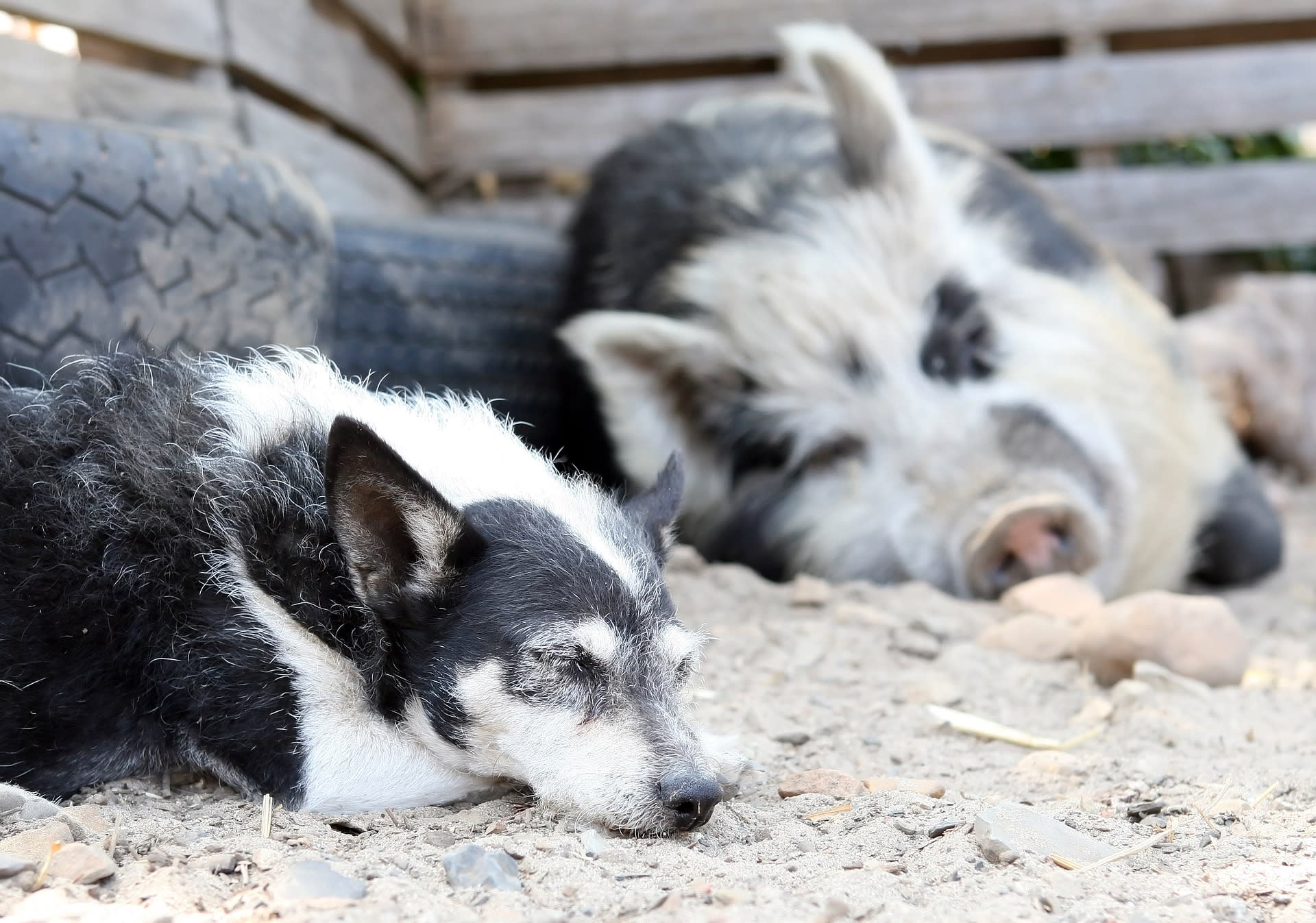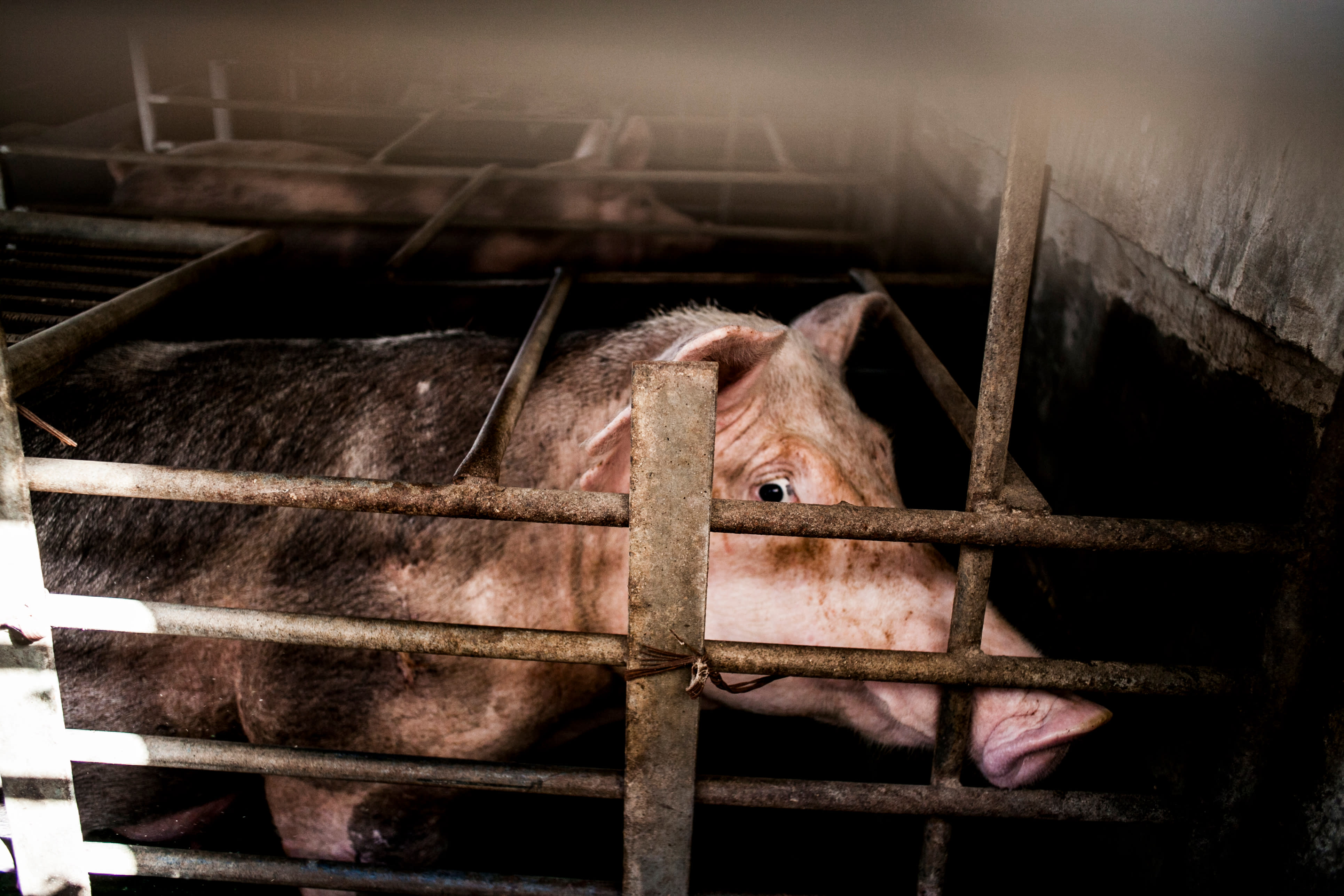“Does the Dog Die???” and Other Questions About Fictional Animal Pain





How do we process fictional and factual animal death, and the purpose it serves?

A few thousand words into our co-written new novel, my wife added a dog. Picture a first draft limping along, and then a goofy mutt leaps into your narrative and starts barking.
It was part of that strange alchemy in the very earliest stage of writing a novel, where a plot is less a rigid structure holding your book up, and more an unfriendly stranger you’re trying to flag down to ask for directions. There was no point to the dog; she simply appeared alongside our heroine, a scruffy and lovable fool with a habit of ducking her whole head into puddles. We had never discussed a dog or decided that she would, eventually, be important to the plot (though of course, she would) but operating on the weird instinct that guides writers, my wife wrote her in—and I recognized her as somehow necessary to the whole story. I also knew something else, immediately and uneasily: We were writing a horror novel, and this poor, sweet dog, whom I already loved, was in danger.
The power of art to move us is so obviously its purpose that it almost feels embarrassing to say. Art connects us; it makes us feel less alone. Duh: let’s move on. But that truism comes out of nowhere to hit us hard, again and again. “You read something which you thought only happened to you, and you discover that it happened 100 years ago to Dostoyevsky,” said James Baldwin. “This is a very great liberation for the suffering, struggling person, who always thinks that he is alone. This is why art is important. Art would not be important if life were not important, and life is important.”
And because of that power, art has the ability to hurt, to disconsolate, to agitate, to upset. The last decade has seen a growing conversation about trigger and content warnings in art, and along with other common warnings for content that might cause trauma responses, a persistent, urgent question has arrived: Does the dog die?!
Animal pain on the big screen
The website DoesTheDogDie answers exactly that question, spoiling plot points in movies and TV so that we’re not suddenly and unexpectedly faced with the death of an animal. (Despite the name, DoesTheDogDie also tracks the deaths of horses, cats, pets in general, and… dragons, alongside other content warnings.) It’s a smart idea, especially for those of us who don’t react well to seeing animal pain depicted in our media. And it could have saved me from several agonizing moments in a theater watching Anatomy of a Fall. (No fear: Messi, the canine star of the movie, is doing just fine.)
Watching animal death play out in media can be unexpectedly confronting—no matter how clearly fictional, no matter how silly. The Office (US) is one of our household’s ultimate comfort shows, but for three years after our beloved ancient cat died, we had to skip the storyline where one of the main characters, Dwight, “mercy kills” his coworker (and secret girlfriend) Angela’s cat. They were objectively funny episodes, we understood; they also made us flinch and cry-laugh, thinking about our poor sweet Lokhi.
For animal welfare advocates, part of the grief and anger we feel may be in recognition of the very real, centuries-long tradition of animal abuse for the sake of entertainment. This long and upsetting history spans from ancient Roman theaters to the 17th century introduction of animals to circuses: a setting where animals are still abused to this day. And in films and television, even the recent increase in laws to protect animal actors has not ruled out all the harm that animals experience. In Lars von Trier’s 2005 film Manderlay, the director and production team greenlit killing a donkey onscreen. Peter Jackson’s epic Lord of the Rings trilogy drew heartwarming headlines when Viggo Mortensen bought the horses he filmed with, but in the follow-up Hobbit movies, 27 animals died due to poor conditions on the farm where they lived.
That’s why perhaps the most important category on DoesTheDogDie is not about any fictional plot points, nor CGI deaths—no matter how gory or tragic—rather, it’s “animals were harmed in the making.” Despite the disclaimer provided by the American Humane Association that you might be used to seeing in cinema, too often animals do suffer harm, abuse, discomfort, distress, and even death on film sets, as a 2013 report revealed. Without a robust legislative framework to protect animals in the entertainment industry, conscientious viewers take it upon themselves to warn, highlight, and boycott the stories which treat animals with violence or neglect.
When does animal pain affect us?
It’s interesting, and troubling, to note that the stories of animal abuse behind the scenes don’t tend to resonate in quite the same way as the fictional deaths onscreen. There’s perhaps an argument to be made that watching animal death onscreen could inure us to violence, but not a particularly convincing one. Desensitization certainly plays a role in our society, but in cultural conversations its significance tends to be overblown, as research shows when debunking myths about video games making teenagers more violent. And indeed what seems so certain about animal abuse on screens is that we hate to see it; in my screening of Anatomy of a Fall, people around me gasped and whimpered over the dog’s predicament in a way we did not over a man’s dead body earlier in the film.
In fact, fictional animal pain seems to hurt more, not less. Part of that is the cunning work of the artist who puts the animal through whatever they go through. Animal pain and death occurs at the service of something—our narrative. Writing a novel, or a script, is like juggling: there’s a certain amount of balls in the air, and they all have to serve the general spectacle. I can’t put a dog in my novel just because she’s cute, although I hope she is; she has to do something, say something, move the story along in some crucial and irreplaceable way. And so for the audience, the animal’s death is at once deeply visceral and also, somehow, necessary. They can comfort or stir us; they are part of art’s often painful ability to remind us of our shared human experience. It’s why a four-minute song still has the ability to make me cry about my old cat.
The animal deaths behind the scenes in the entertainment industry are not necessary. They are pointless and tragic. There is no satisfying narrative arc to them, no greater light they can shed on theme or character. And so we turn from them, instinctively, as part of a story we do not want. Or worse, not a story at all—just messy, cruel reality.
It’s strange, too, to think about the many thousands of people who have undoubtedly cried over a dog’s death in a movie, and then went home to eat a hamburger. The animals we eat suffer on such a massive, grand scale; if the entertainment industry replicated such widespread abuse, it would no doubt have been shut down by now. But we don’t seem to mind the pain that comes in service of our appetites. The story of our meal starts with the ingredients, not the animal.
But those animals are out there, whether we give them the dignity of their stories or not. In factory farms around the world, countless atrocities worthy of the grimmest novels happen every day. Factory farms keep pigs, cows, chickens, and other animals in terrifyingly tiny enclosures; they breed chickens into horrifying bodies that cause them pain, all for a better meal for the end consumer; they mutilate cows and goats, who lose their horns, and dock baby lambs’ tails; and of course, the whole miserable narrative ends in a violent death at a slaughterhouse.
When is art not enough?
I won’t say what happens to that silly, nervous dog in our novel. But I will say that she is not the only animal in danger in the pages of the book. Our characters eat meat, wear leather. There is an offhand mention of a rabbit stew. Fading behind the spotlight on specific harm for this one particular animal is a background in which the deadly machinery of factory farms and the meat industry rumbles on. It’s likely that readers will care about that one dog and not even notice the rest—we wrote it that way, after all. But it’s worth reflecting on our choices, including my own personal ones as a writer, to think about what we prioritize and what we don’t consider a worthy part of the story.
Animal welfare advocates—including us!—often find one of the best ways to spread awareness about animal cruelty is by turning it into a true story, with those familiar narrative beats. Focusing on one animal, like Firecracker or Victoria, and sharing their individual journey makes it easier for us to identify with, and process the widespread horror that happens to millions of animals trapped in the factory farm system. Then we can mourn their stories and celebrate their escapes the way we might for a dog in a film.
It’s against my instincts as a writer to say that sometimes, art simply isn’t enough. (That’s my job you’re talking about!) But to a certain extent, there is no art that can truly convey the scale of cruelty that farmed animals face, or at least art that can reach the people who need to be reached in time to stop untold suffering. Because so many people refuse to acknowledge the sentience of animals raised for food—and because telling the individual story of each animal suffering in the factory farm system to make that sentience clear is impossible in terms of sheer scale—and because factory farming is an exigent crisis, we need immediate change. We need legislation, protests, and campaigns which will spur large-scale and “faster” results due to their public accessibility and visibility. We need to join together to create change. And then, I hope, we will continue to tell the story of farmed animals… with the hope of a happy ending.






